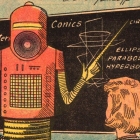-
 +4 +1
+4 +1Solving the RIME deployment mystery
When the RIME antenna on ESA’s Juice mission failed to deploy a few days after launch, the engineering teams faced the mighty challenge to understand the fault and rectify it. At stake was a chance to see inside Jupiter’s mysterious icy moons.
-
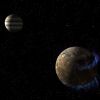 +15 +1
+15 +1All of Jupiter's Large Moons Have Auroras
Jupiter is well known for its spectacular aurorae, thanks in no small part to the Juno orbiter and recent images taken by the James Webb Space Telescope (JWST). Like Earth, these dazzling displays result from charged solar particles interacting with Jupiter’s magnetic field and atmosphere. Over the years, astronomers have also detected faint aurorae in the atmospheres of Jupiter’s largest moons (aka. the “Galilean Moons“). These are also the result of interaction, in this case, between Jupiter’s magnetic field and particles emanating from the moons’ atmospheres.
-
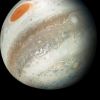 +20 +1
+20 +1Suck It, Saturn: Jupiter Now Officially Has Most Moons in the Solar System
Jupiter is a superstar in our solar system. It’s the biggest, it’s wonderfully gassy, and it now has the most documented moons, clocking in at 92 natural satellites. Its new count became official on January 20, 2023, when the Minor Planet Center recognized the last of a batch of 10 newly identified moons. Jupiter is stealing the title from Saturn, which only has 83 documented moons.
-
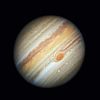 +20 +1
+20 +1Jupiter's moon count jumps to 92, most in solar system
Astronomers have discovered 12 new moons around Jupiter, putting the total count at a record-breaking 92. That's more than any other planet in our solar system. Saturn, the one-time leader, comes in a close second with 83 confirmed moons.
-
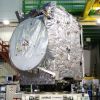 +19 +1
+19 +1Jupiter now has 92 moons — more than any other planet in our solar system
Astronomers have discovered 12 new moons around Jupiter, putting the total count at a record-breaking 92. That's more than any other planet in our solar system.
-
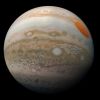 +14 +1
+14 +1Jupiter is flinging rocks at Earth 'like a sniper', scientist reveals
Jupiter is flinging dangerous comets and asteroids at Earth rather than acting as its shield, a scientist has revealed. A popular theory suggests that Jupiter acts like a gigantic protector in the solar system, sucking or deflecting dangerous debris with its tremendous mass.
-
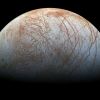 +20 +1
+20 +1Juno just raced by Europa, providing our best look in 20 years at the icy world
"We are screaming by pretty fast."
-
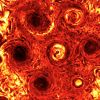 +17 +1
+17 +1Scientists stumped by strange polygon-shaped cyclones on Jupiter
Enormous polygon-shaped cyclone systems at Jupiter’s north and south poles have left scientists baffled over how they maintain their bizarre but beautifully geometric shapes for years. The hurricane-force storms — each the size of the continental United States — have remained inexplicably stable in their strange configurations since they were first discovered by the Juno spacecraft in 2017.
-
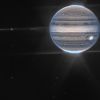 +13 +1
+13 +1‘Incredible’ Jupiter images revealed by NASA’s James Webb telescope
Stunning images taken by NASA’s James Webb Space Telescope show Jupiter in new glory. Fifth in line from the sun, Jupiter is the largest planet in our solar system — more than twice as big as all the others combined. If Earth were the size of a grape, Jupiter would be the size of a basketball, NASA says.
-
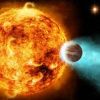 +4 +1
+4 +1James Webb Space Telescope detects clouds on a 'hot Jupiter' that we thought had clear skies
The James Webb Space Telescope (JWST or Webb) is already confounding expectations with a surprising new discovery: It detected evidence for clouds on an exoplanet that was thought to have completely clear skies.
-
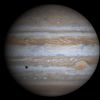 +18 +1
+18 +1Scientists find remains of cannibalized baby planets in Jupiter's cloud-covered belly
The finding settles a long-standing debate about the gas giant's formation.
-
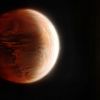 +15 +1
+15 +1A “hot Jupiter’s” dark side is revealed in detail for first time
MIT astronomers have obtained the clearest view yet of the perpetual dark side of an exoplanet that is “tidally locked” to its star. The planet is WASP-121b, a massive gas giant nearly twice the size of Jupiter.
-
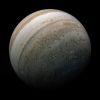 +10 +1
+10 +1NASA space telescope spots most powerful light ever seen on Jupiter, helps solve 30-year-old mystery
NASA has detected the most energetic light ever seen on Jupiter and, in the process, solved a 30-year-old mystery. In a new study, researchers using NASA's Nuclear Spectroscopic Telescope Array (NuSTAR) space observatory were able to spot the highest-energy light ever seen on Jupiter. The light, which is X-ray radiation, is also the highest-energy light ever seen on a planet in our solar system other than Earth.
-
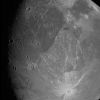 +19 +1
+19 +1NASA’s Juno Spacecraft ‘Hears’ Jupiter’s Moon
An audio track collected during Jupiter mission’s Ganymede flyby offers a dramatic ride-along. It is one highlights mission scientists shared in a briefing at American Geophysical Union Fall Meeting. Sounds from a Ganymede flyby, magnetic fields, and remarkable comparisons between Jupiter and Earth’s oceans and atmospheres were discussed during a briefing today on NASA’s Juno mission to Jupiter at the American Geophysical Union Fall Meeting in New Orleans.
-
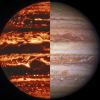 +3 +1
+3 +1NASA's Juno probe reveals secrets of Jupiter's atmosphere in 3D
A NASA spacecraft is giving the best-ever 3D model of the largest planet of our solar system. The Juno mission is using its second extended phase to peer far into the clouds of Jupiter, using a polar-orbiting view that no previous spacecraft was able to access.
-
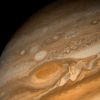 +13 +1
+13 +1Jupiter's Great Red Spot is even deeper than scientists had thought
It's hard to imagine the sheer scale of Jupiter's Great Red Spot from here on Earth, because the storm is so big that it could swallow our planet. Now, it turns out, the Great Red Spot isn't just wide: it's deep too, quite a bit deeper than anybody expected. Data from NASA's Juno spacecraft has shown that the behemoth storm extends as much as 310 miles (500 kilometers) beneath Jupiter's cloud tops. And the Jupiter maelstrom is linked to jets that go far deeper, hinting that the giant planet's upper and lower atmospheres are tied together.
-
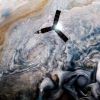 +7 +1
+7 +15 years of stunning Jupiter photos from NASA's Juno mission
NASA's Juno spacecraft has zipped past Jupiter's poles, watched its Great Red Spot churn, and visited its largest moon.
-
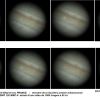 +16 +1
+16 +1Something big just hit Jupiter
In 1994, the Comet Shoemaker-Levy 9 (SL9) impacted Jupiter, which had captured the comet shortly before (and broken apart by its gravity). The event became a media circus as it was the first direct observation of an extraterrestrial collision of Solar System objects. The impact was so powerful that it left scars that endured for months and were more discernible than Jupiter's Great Red Spot.
-
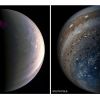 +13 +1
+13 +1Mystery solved: Jupiter’s X-ray aurora explained
X-ray flares triggered by vibrations in magnetic field lines.
-
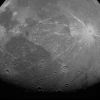 +22 +1
+22 +1Nasa just got amazing views of Jupiter's largest moon
The images Juno captured are the most up-close NASA has gotten to Ganymede in over 20 years—and the views didn't disappoint.
Submit a link
Start a discussion


